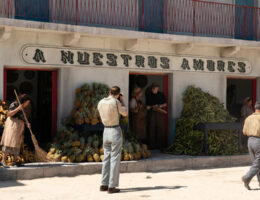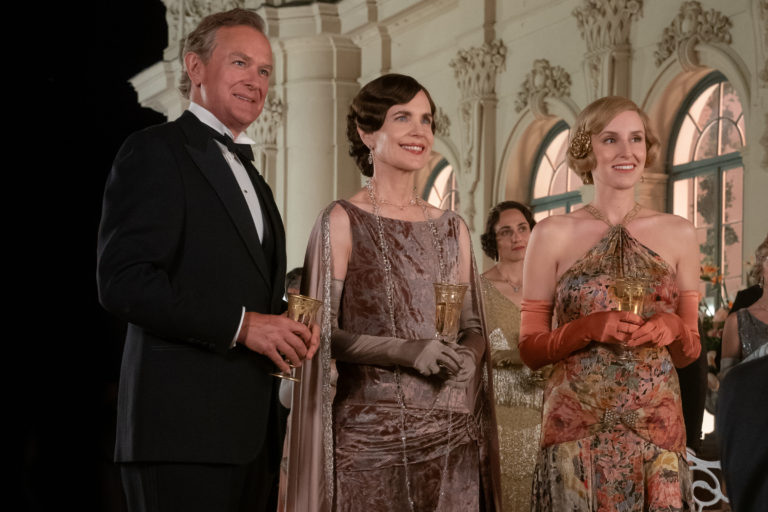Downton Abbey: A New Era (2022 | UK | 125 minutes | Simon Curtis)
Less a feature film than an occasion to binge-watch a mini-season in a theater with friends who will cackle along at the cuttingly droll humor and gasp in synchrony with each revelation or faux pas, the new Downton Abbey is an utter delight of fan service. Just as some will pack the multiplexes whenever a bunch of Marvel heroes assemble, I will happily pile in with a bag of popcorn and peanut M&Ms whenever the Granthams and their sprawling team of servants deign to get the gang back together for yet another round of utterly inconsequential drama that can be tidily wrapped up, two hours later, with an elegant bow.
I’m fairly sure that I’ve watched every single hour of the series as well as the Christmas specials and feature films, but could not recall a single detail of the convoluted plot that sets up this movie. Luckily — at my screening, at least — the ever-underdog butler-turned-valet-turned-footman-turned-schoolteacher Thomas Molesley (Kevin Doyle who must have done something special for Julian Fellowes to deserve this treatment) introduced the film with a whirlwind synopsis of the many weddings, deaths, births, affairs, and inheritance plots that lead us to this adventure. It is a mildly helpful refresher only insomuch as to remind us that these aristocrats and their devoted staff have had a lot of major life events and brushes with the precipices of so many crises, yet escaped with only marginal consequences and stiff upper lips.
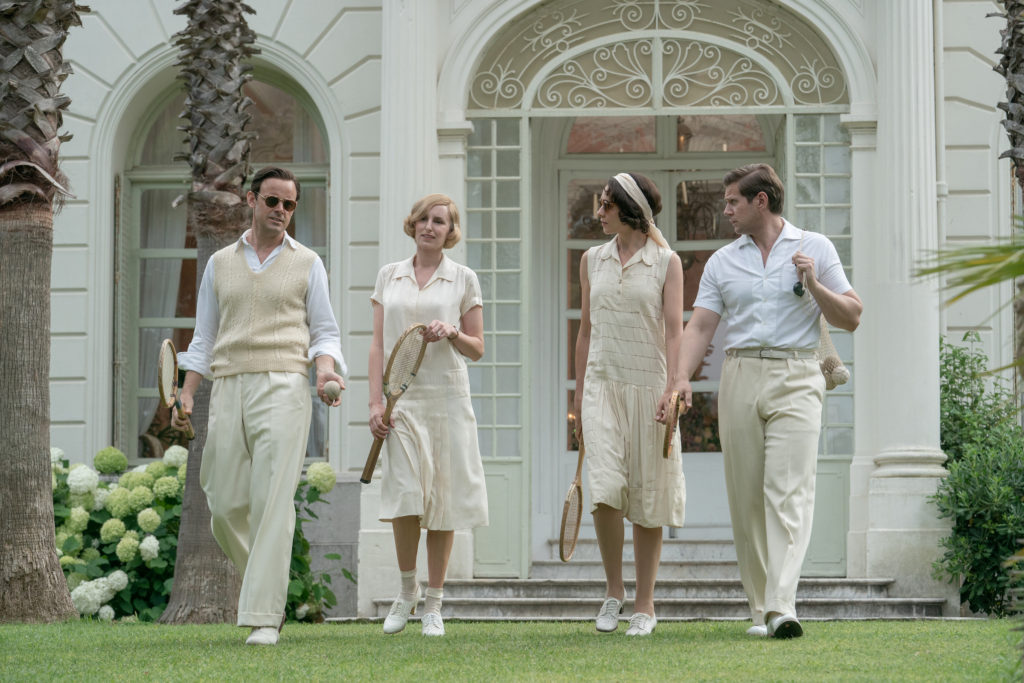
With a script by series creator (and actual Lord) Julian Fellows, this second feature film outing concerns two lightly-overlapping plots that each stem from the perpetual need of the British aristocracy to scramble to build and preserve generational wealth. The two ever-unlikely stories largely split the main cast for much of the running time, perhaps a symptom of actor scheduling or a concession to filming under Covid protocols (the number of scenes structured with performers arranged in small groups, at ample social distances, often outside, feels very much more of our present era than the film’s 1930s setting).
The first major plot involves an unexpected inheritance — the lifeblood of this series — when the Dowager Countess learns that the death of an old paramour has left her in possession of a luxurious vacation estate in the south of France. Frankly, my foggy recollection of the last film was that it set up Maggie Smith to shuffle gently from this mortal coil between installations, but in reprising her now-iconic role she nevertheless makes hay from every line, cantankerous or sentimental. While this storyline concerns her character’s past, neither the Countess nor the actor portraying her seemed to have any interest in leaving England, so an uncommonly large entourage goes to visit the property in her stead — and in the once-unfashionable, sweltering offseason, no less! Accepting a mysterious invitation from the son of the man who left the Dowager a house, which she plans to gift to her last remaining un-landed great-granddaughter* (the child of Sybill who died in childbirth after running away with Irish Catholic driver-turned-estate manager Tom), nearly half the cast piles onto a boat and heads south. This finds the Earl and Countess Robert (Hugh Bonneville) and Cora (Elizabeth McGovern), sister Rosamund (Samantha Bond), daughter Edith (Laura Carmichael), son-in-law Tom (Allen Leech), plus some spouses, servants, and a very fish-out-of water retired butler Carson (Jim Carter) in a comedy of cross-continental manners trying to untangle why a relative stranger would leave their matriarch a house. The trip doesn’t exactly make sense, but it allows for a lot of outdoor filming in a beautiful setting and the inherent comedy of hapless English abroad.
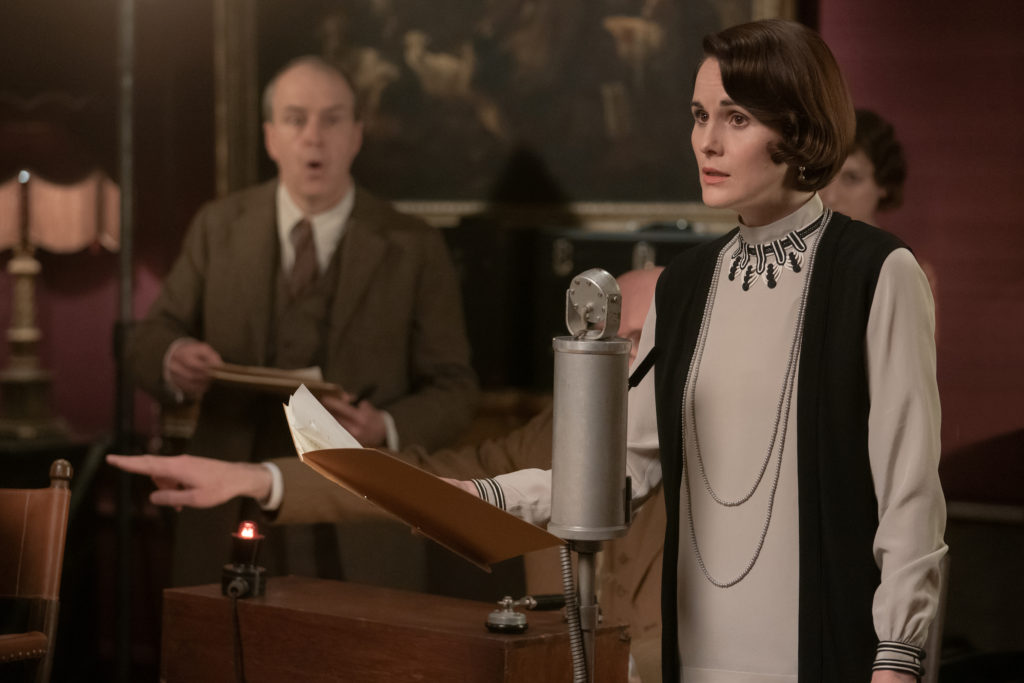
The other plot keeps the rest of the cast close to home. When a film production company makes the Granthams an offer that hard-bargaining Mary (Michelle Dockery), now at the helm of Downton’s day-to-day operations, can’t refuse: in exchange for using the grand estate as a set for a silent picture, they’ll hand over a pile of cash more than big enough to repair the house’s increasingly leaky roof.
Hijinks will, of course, ensue. The servants are beguiled by the celebrities in the house. Mary is vaguely annoyed that her husband couldn’t be bothered to show up for this installation, but keeps herself occupied by constantly being the only person capable of solving problems whenever the film’s director (Hugh Dancy) runs into obstacles with production. After all, she once birthed some pigs in the rain, salvaging a runaway film is nothing compared to that. Incorporating the cinema history of the rocky transition from silent pictures to talkies, this storyline lifts heavily from Singin’ in the Rain, but it’s a fun excuse to cast Dominic West as the suave leading man and Laura Haddock as the insufferably entitled leading lady with a secret fingernails-on-chalkboard low-class accent.
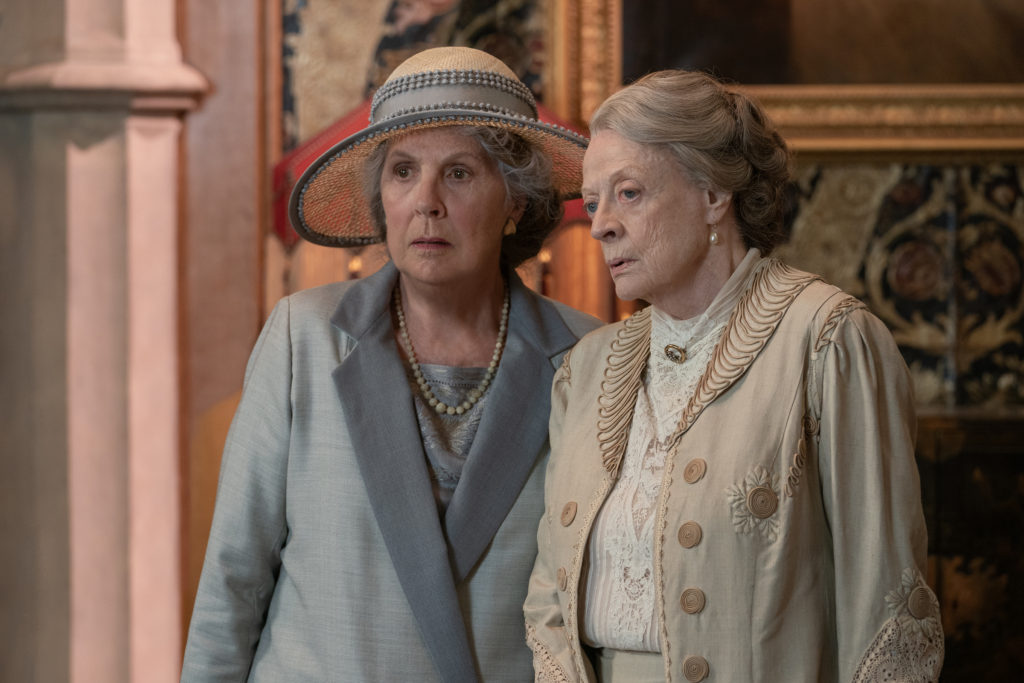
Despite the “New Era” subtitle, this Downton Abbey remains concerned with loose ends. Each major storyline squeezes in several seasons’ worth of subplots, giving everyone in the sprawling cast their moment. Fellows’s script finds room to consider the domestic tranquility of Daisy the Cook, the tragic loneliness of Thomas the somewhat-openly-gay Butler, and for reasons unknown, the surprising competence of haplessly-awkward Molesley. But it’s all done with such a light touch and sprightly pace that it never feels overcrowded. Similarly, the film goes on perhaps a bit too long to give the spotlight as the beloved Dowager Countess, but when you get Maggie Smith back on set, only a fool would deny her time in front of the camera. Her scenes with longtime “sparring partner” Isobel (Penelope Wilton) are surprisingly some of the film’s most affecting.
Director Simon Curtis doesn’t do anything particularly showy, but proves himself a capable steward of the property. Keeping the look and feel within the parameters of the long-running series, he manages to juggle all of the various storylines into something vaguely effervescent. There’s nothing especially cinematic, but no one can doubt the deep well of affection for all of these characters. Although their problems are overblown and self-induced, no calamity is too big that it can’t be fixed by the homespun pluck and wisdom of the “downstairs people” or the ingenuity of a landed gentry willing to accept the creeping tide of modernity.
Like the very best help, Downton Abbey: A New Era aims to please. For longtime fans of the series, it’s an unqualified success. I found myself gasping in amazement and laughing out loud more than I have in recent memory. I’m sure that by the time the next one of these rolls around, I’ll have forgotten most of the details of the schemes, scares, antics, and shocks but have the utmost confidence that there will always be a dutiful butler to whisper relevant reminders in my ear and a handsome new Golden Labrador romping around the yard to greet me.
Downton Abbey: A New Era arrives in theaters on May 20
Images courtesy Focus Features.


